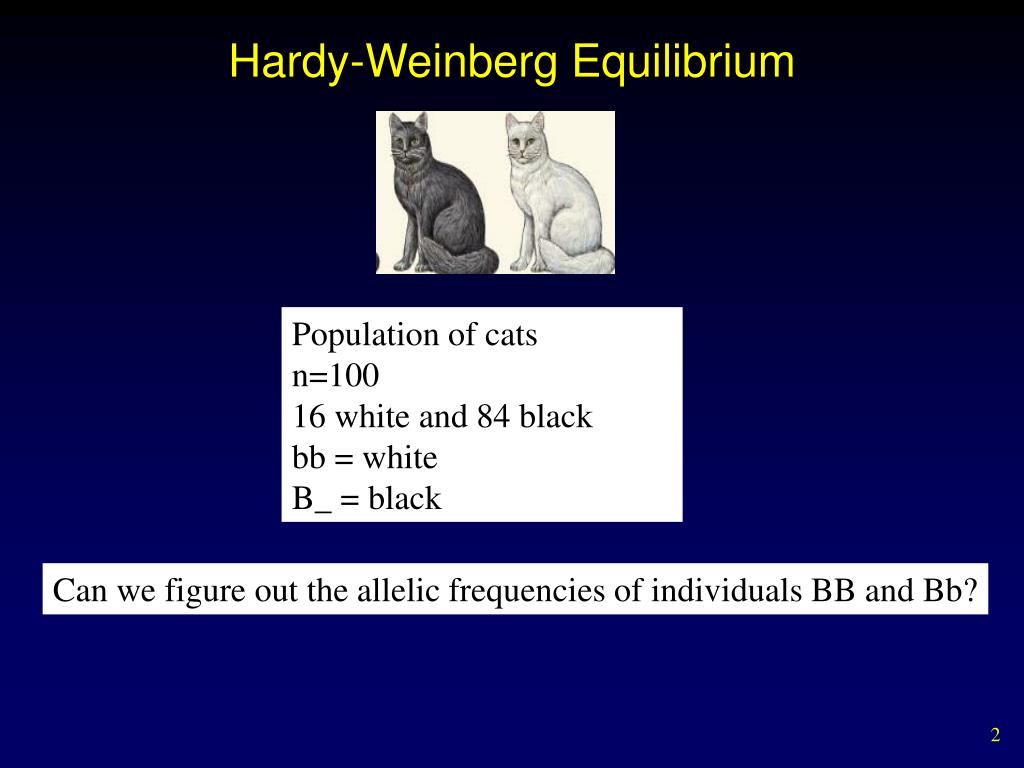

Study of the ways in which alleles “survive” from one generation to the next can offer important insights about the evolutionary pressures that lead to change in a population. Each of these factors will impact the likelihood of any allele to be passed to a successive generation and thus push allele frequencies away from Hardy-Weinberg equilibrium.

Using simulations such as this one you can see how this notion is contradicted even in the absence of any kind of disturbance or selective pressure, as well as the impact of the exceptions to circumstances under which genetic variation will remain constant.Īs we mentioned above, some common “disturbances” to a population that will result in a change in genetic variation include natural selection on allele expression, migration, or random mutations. What made their contribution to the field of biology even more controversial was their respective professions: Hardy was a mathematician and Weinberg an obstetrician-gynecologist. Though the implications of Godfrey Harold Hardy and Wilhelm Weinberg’s equation are intuitive today, when they each arrived at the concept independently in 1908 it contradicted the commonly held belief in evolutionary biology that a dominant allele will tend to increase in frequency over time. The sum of all three frequencies represents all individuals in the population and has to be 1.0 by definition.

Thus p squared is the frequency of homozygous dominant genotypes, q squared is the frequency of homozygous recessive genotypes, and 2pq is the frequency of heterozygous genotypes. The p is the decimal frequency of the dominant allele and the q is the frequency of the recessive allele. The equation assumes a single gene that has two alleles, one dominant and one recessive. In other words, we can use the predictions for allele frequencies from the Hardy-Weinberg equation to test whether or not factors are driving evolution at a particular location within the genome. Despite the reality of such factors in almost every real population, the Hardy-Weinberg equation remains so important to biology because it establishes the null hypothesis against which those factors are tested by biologists. These factors include things like natural selection, mutations, nonrandom mating, random genetic drift, and gene flow from mating with nearby populations. We know that in reality there are almost always some factors at play causing the frequency of alleles to change in any population of organisms. The Hardy-Weinberg equation is a relatively simple mathematical equation that describes a very important principle of population genetics: the amount of genetic variation in a population will remain the same from generation to generation unless there are factors driving the frequencies of certain alleles (genetic variants) to change.


 0 kommentar(er)
0 kommentar(er)
